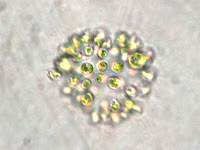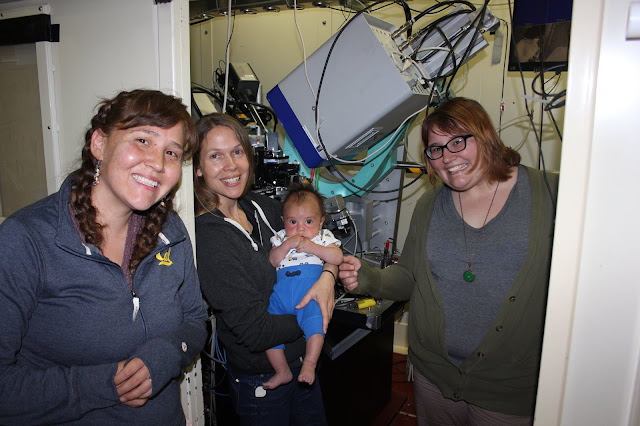Paralytic shellfish toxins (PSTs) constitute a suite of harmful neurotoxins commonly produced in marine ecosystems by several species of dinoflagellates within the genus Alexandrium. Dinoflagellates are eukaryotes and are usually considered algae. Most dinoflagellates are marine plankton There are up to 30 species of dinoflagellates in the genus Alexandrium. Species are defined by morphological features found in their thecal plate. Thecal plates are composed
of cellulose or polysaccharide microfibrils. The size,
shape and arrangement of thecal plates are used to distinguish dinoflagellate species. Light microscopy is used to find and determine the presence of Alexandrium. However, scanning electron microscopy is used to characterize the thecal plates and distinguish one species from another.
Documented cases of PSP in Alaska date back centuries to Captain George Vancouver’s survey of the Pacific coast in the early 1790s (Quayle 1969; Horner et al.1997).
Vandersea et al. (2017) not only developed new assays for the Alexandrium species most likely to be present in Alaska they also did a systematic evaluation of all published (~150) Alexandrium species- specific assays. They collated published Alexandrium PCR, qPCR, and in situ hybridization assay primers and probes that targeted the small-subunit (SSU), internal transcribed spacer (ITS/5.8S), or D1–D3 large-subunit (LSU) (SSU/ITS/LSU) ribosomal DNA genes.
Garneau et al. (2011) used molecular beacon-based qPCR method to detect and quantify A. catenella in pure cultures and in mixed natural plankton assemblages.
Proposed experiments:
Culture Alexandrium species. Cell lysates created from A. catenlla culture (ACRB01) of known abundance will be used to correlate cell numbers to qPCR threshold cycles (Ct) using a standardized protocol. There are variances in copy number within dinoflagellates. So, a calibration curve of 5 point 1:10 serial dilution of a known abundance of actively growing A. catellena cells. Cell numbers will be determined by light microscopy. Primers UScatF and UScatR and UScatMB with 6-fluorescein amidite (6-FAM) at the 5' end (synthesized by Eurofins MWG Operon) will be used for qPCR.
In an effort to predict toxic PST events, we will collect A. catenlla samples along with salinity, temperature, nutrients, chlorophyll, and PST biotoxin levels. Data from three marine stations in Bellingham Bay, WA will be documented in order to determine which environmental conditions promote the onset and flourishing of PST events or unusual bloom events.
References:
Quayle, Paralytic Shellfish Poisoning in British Columbia, Fisheries Research Board of Canada; First Edition edition (1969)
Galluzzi, L., et al. (2004) Development of a real-time PCR assay for rapid detection and quantification of Alexandrium minutum (a dinoflagellate). Appl. Environ. Microbiol. 70:1199–1206.
Moorthi, et al. (2006) Use of quantitative real-time PCR to investigate the dynamics of the red tide
dinoflagellate Lingulodinium polyedrum. Microb. Ecol. 52:136–150.
Garneau et al. (2011) Examination of the Seasonal Dynamics of the Toxic Dinoflagellate Alexandrium catenella at Redondo Beach, California, by Quantitative PCR
Vandersea et al. (2017) qPCR assays for Alexandrium fundyense and A. ostenfeldii (Dinophyceae) identified from Alaskan waters and a review of species-specific Alexandrium molecular assays















